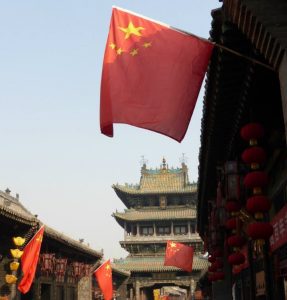 For the past four months I have been living in Shanghai, and to be an eye witness to China’s emergence as a global powerhouse has been an exciting and extraordinary experience. With the country’s economy set to take over the United States’, Chinese companies are breaking into the Western markets at unprecedented rates. On the flip side, Western companies have been entering the Chinese market for the past 30 years or so and continue to see the value here.
For the past four months I have been living in Shanghai, and to be an eye witness to China’s emergence as a global powerhouse has been an exciting and extraordinary experience. With the country’s economy set to take over the United States’, Chinese companies are breaking into the Western markets at unprecedented rates. On the flip side, Western companies have been entering the Chinese market for the past 30 years or so and continue to see the value here.
As the Chinese government loosens regulations, this BRIC nation is leading the emerging markets in the globalization of consumer goods. Actively perusing Western models, China is coming into its own as a global leader in all facets of business.
As public relations in the country strives to keep pace with these rapid changes, the practice is seeing an evolution and is forging brands headlong into the adventure. I caught up with Lyndon Cao, director of the Global China Practice at Ogilvy & Mather, to discuss these new frontiers. In his position in the New York City office, Cao strategically positions Chinese brands in foreign markets to become globally recognized.
1. What is the state of public relations in China?
Public relations in China is growing. It’s currently experiencing growing pains on its way to be a well-established and respected practice among consumers. Public relations in China is moving at a much faster pace than other emerging markets.
With the Chinese economy on its way to become the largest in the world, I believe it will be the birthplace of a number of top-notch brands. As these brands look to expand, they need public relations to help them become global. Out of this growing economy, Chinese brands are experiencing tremendous changes as they reach outside of the country’s borders to foreign markets. These changes are causing the public relations industry to also evolve to better meet the needs of the clients.
2. What are the differences, in your opinion, of how public relations is practiced in China and the U.S.?
In a very personal view, I would say in the U.S. to pitch a story, you have to tell your story very well. You’re judged more on your ability than on your background. In China, there is more of a personal relationship focus on your story. The journalists in China depend more on the relationship you build with them than the journalists in the U.S. As the media landscape in China is changing very fast, as the entire country is, there is going to be a convergence in these styles soon.
3. What are the similarities?
Though relationship-based branding of organizations is more prevalent in China, relationships are important in both countries. There is a great need for networking in the U.S. and China as lots of work gets done by who you know. There is also a similar respect for new technology in both countries. China is very closely watching the rise of social media platforms in the West to adopt and localize them for national use. The lessons are learned, adapted and moved even faster in China. That really is the overarching theme for communication development in China over the next decade.
4. What do you predict are the major developments for public relations in China in the next five years?
Once the restructure of the economy has reached a certain stage, we’re going to see an unparalleled increase in consumer buying power. As government regulations soften, consumers will move toward purchasing more and higher-quality brands. This restructure will be similar to Western countries, but it will have its own localized platform. There will be a convergence with the U.S., but China will be more market driven in creating business.
5. Keeping in mind the recent crackdown on “Black PR” in China, what other challenges do public relations professionals face in the country?
As the economy becomes more market driven and matures, I believe we’ll see these corrupt practices weeded out. As reformed regulations are put into place, there will be no room for bad public relations and good public relations will prevail. There will be setbacks and anomalies as the country continues to evolve into a world power, but the growth will help us develop better practices that will best advance our clients into the global marketplace. We are very optimistic about the future.
6. What advice would you give public relations practitioners in the U.S. looking to work in China or with Chinese colleagues and vice-versa?
First and foremost, there must be a sensitivity to the culture. Chinese clients are used to quick results, fast turnarounds. Working overtime and on weekends is a norm. We need to recognize this cultural gap and work together to bridge it. We must adapt and find a common ground to best support the client’s needs.
 Lyndon Cao is the director for the Global China Practice at Ogilvy & Mather in New York City where he strategically positions Chinese brands in foreign markets to become globally recognized. Before accepting this position in 2011, Cao was the vice president for marketing at the launch of China Daily USA, the North American version of China’s national English language newspaper. A former advisor to the Chinese Foreign Ministry and a diplomat of the Permanent Mission of China to the United Nations, Cao received his Master’s in Public Administration from Harvard University’s John F. Kennedy School of Government.
Lyndon Cao is the director for the Global China Practice at Ogilvy & Mather in New York City where he strategically positions Chinese brands in foreign markets to become globally recognized. Before accepting this position in 2011, Cao was the vice president for marketing at the launch of China Daily USA, the North American version of China’s national English language newspaper. A former advisor to the Chinese Foreign Ministry and a diplomat of the Permanent Mission of China to the United Nations, Cao received his Master’s in Public Administration from Harvard University’s John F. Kennedy School of Government.



